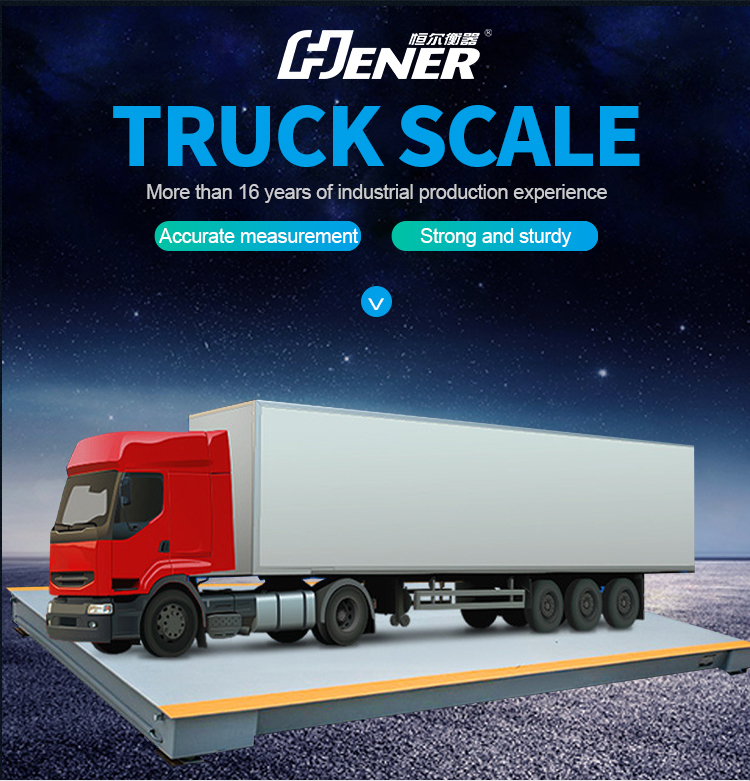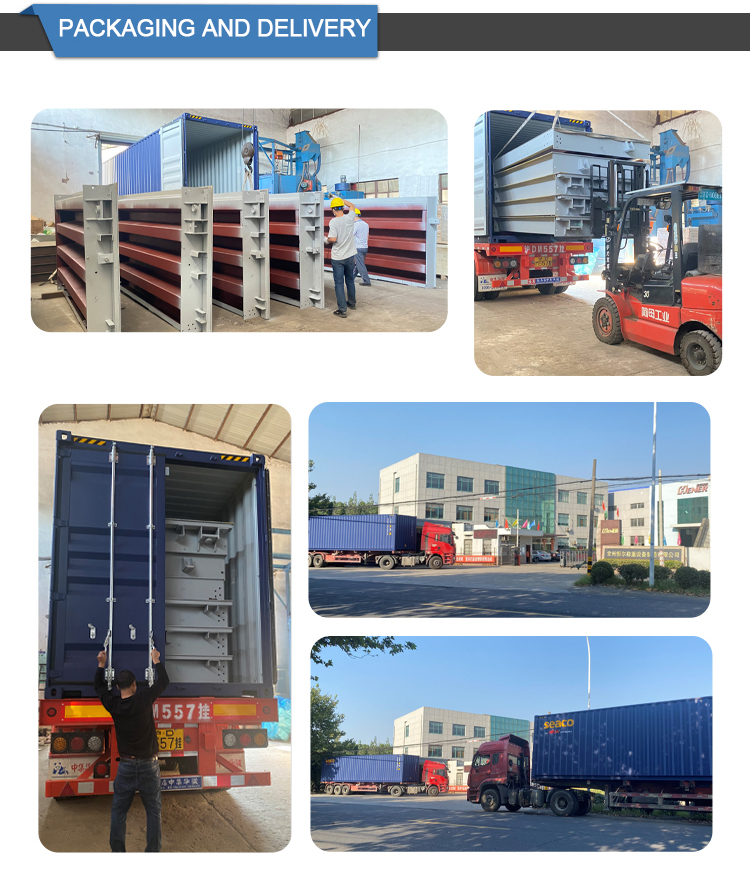Views: 3 Author: Site Editor Publish Time: 2024-03-11 Origin: Site
Supeior mesurement performance, high acaurasy.long-term stability, convenient installation and maintenance, make our truck scale widely used in materials measurement in or out,inventory measurement, production monitoring and data management and etc. it's suitable for metallurgy, chemical industry, food. weighing of lorries, trailers, semi-trailers, containers, dump trucks, agricultural vehicles and other overlbading vehicles.

truck scale

truck scale-Hener Scale
Truck scales, also known as weighbridges or weigh stations, are used to weigh vehicles and their contents, particularly trucks and trailers. They serve several purposes:
Weight Compliance: One of the primary purposes of truck scales is to ensure that trucks are within legal weight limits. Overloaded trucks can cause damage to roads, bridges, and other infrastructure, as well as pose safety hazards.
Using truck scales typically involves the following steps:
Approach the Scale: When arriving at a truck scale, drivers should follow any posted signs or instructions indicating where to stop and how to approach the scale.
Stop and Position the Vehicle: Once at the scale, the driver should bring the vehicle to a complete stop and position it according to the markings on the scale platform. It's essential to ensure that the entire vehicle, including any trailers or additional cargo, is entirely on the scale platform.
Wait for Instructions: Depending on the type of scale and its setup, there may be instructions for the driver to follow. This could include waiting for a signal from a scale operator or following automated prompts if the scale is equipped with technology for self-service weighing.
Weighing Process: The actual weighing process will vary depending on the scale's design. In most cases, the weight of the vehicle and its contents will be measured while it is stationary on the scale platform. This weight will typically be displayed on a screen or provided to the driver in some form.
Receive Results: Once the weighing process is complete, the driver will receive the results, usually in the form of a printed ticket, digital readout, or electronic transmission. This information will include the vehicle's weight, possibly broken down into individual axle weights or other relevant measurements.
Follow Instructions: Depending on the purpose of the weighing (e.g., compliance with weight limits, toll payment), the driver may need to follow specific instructions provided along with the weight results. This could include adjusting the vehicle's load, paying toll fees, or proceeding to the next destination.
Exit the Scale: After receiving the weight results and any accompanying instructions, the driver should carefully exit the scale platform, following any designated routes or procedures.
Installing a truck scale involves several key steps to ensure accurate operation and compliance with regulations. Here's an overview of the typical installation process:
Site Selection: Choose a suitable location for the truck scale installation. Factors to consider include accessibility, ground stability, drainage, and proximity to roads or highways.
Permitting and Approvals: Obtain any necessary permits and approvals from local authorities before beginning the installation process. This may involve zoning permits, environmental assessments, or other regulatory requirements.
Site Preparation: Prepare the installation site by clearing the area of any debris, vegetation, or obstacles. Ensure that the ground is level and compacted to provide a stable foundation for the truck scale.
Foundation Construction: Construct the foundation for the truck scale according to the manufacturer's specifications and local building codes. This typically involves pouring concrete footings or pads to support the scale platform and load cells.
Scale Installation: Install the scale platform and associated components according to the manufacturer's instructions. This includes positioning the weighbridge sections, installing load cells, and connecting wiring for data transmission and power.
Calibration and Testing: Calibrate the truck scale to ensure accurate weight measurements. This involves applying known weights to the scale and adjusting calibration settings as needed. Perform thorough testing to verify the scale's accuracy and functionality.
Accessories and Infrastructure: Install any additional accessories or infrastructure components, such as signage, lighting, security cameras, or automated data collection systems. Ensure that these components are properly integrated with the truck scale system.
Safety Features: Install safety features such as guardrails, traffic barriers, and warning signs to ensure the safe operation of the truck scale and protect personnel and vehicles in the vicinity.
Final Inspection and Certification: Conduct a final inspection of the installed truck scale to ensure compliance with regulations and manufacturer specifications. Obtain any necessary certifications or approvals before putting the scale into service.
Training and Documentation: Provide training for personnel responsible for operating and maintaining the truck scale. Prepare documentation including operating manuals, maintenance schedules, and warranty information.
What is the difference between above-ground truck scale and pit-mounted Truck scale?
100 Tons Electronic Truck Scales: Revolutionizing The Transportation Industry
Maximizing Operational Efficiency with Advanced Weighbridge Solutions
Exploring the Evolution of Weighbridge Systems: From Analog to Digital
Weighbridges: Bridging the Gap Between Accuracy and Convenience
Unveiling the Advantages of Weighbridges in Supply Chain Operations
Weighbridges: A Crucial Component for Precise Inventory Management